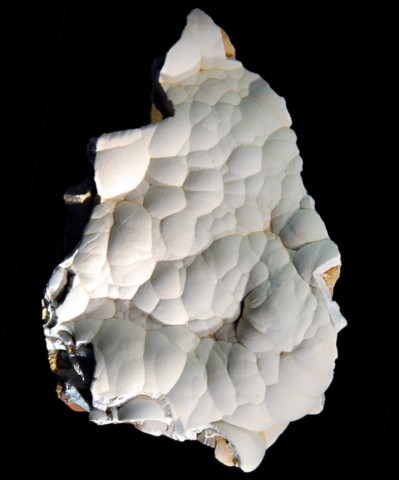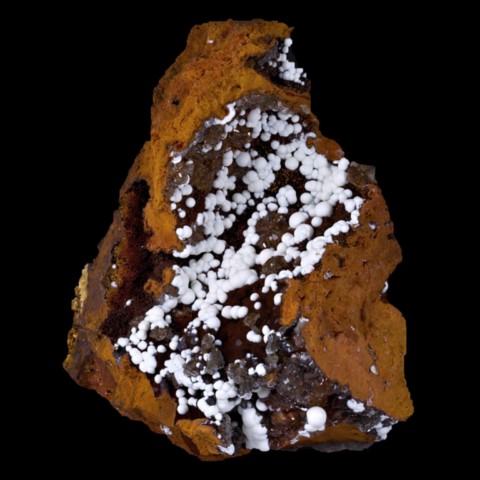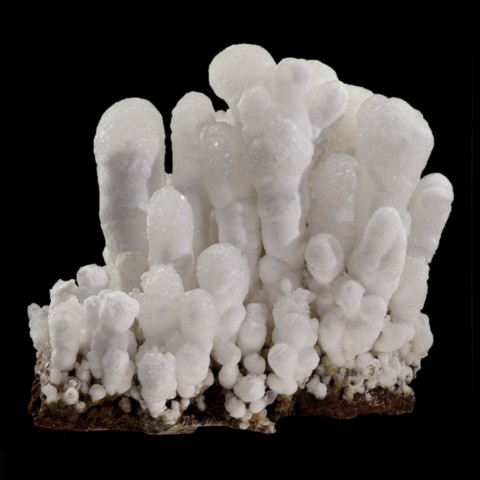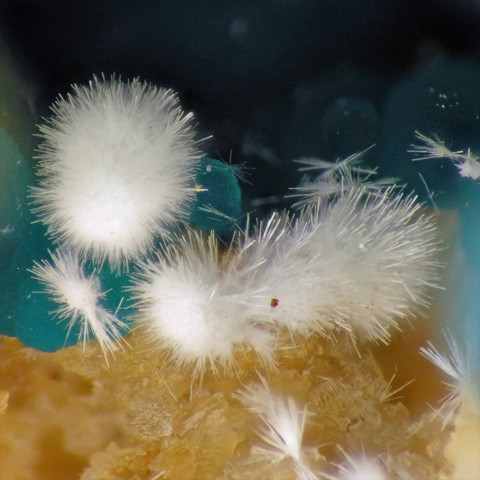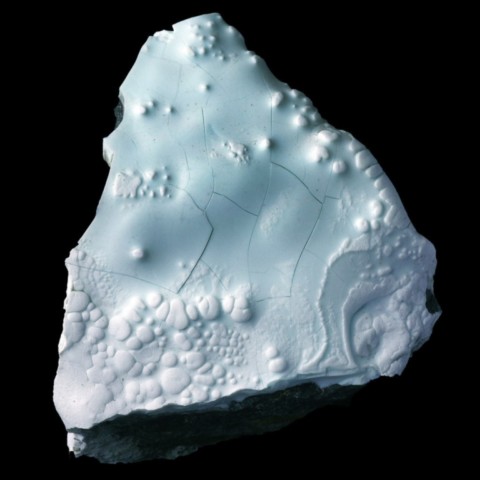 Hydrozincite - Encyclopedia
Hydrozincite - Encyclopedia
Class : Carbonates, nitrates, borates
Subclass : Hydrated carbonates
Crystal system : Monoclinic
Chemistry : Zn5(CO3)2(OH)6
Rarity : Quite common
Hydrozincite is a hydrated carbonate formed in an arid climate in the oxidation zone of zinc deposits. Its name is derived from its chemical composition : a hydrated zinc carbonate. It is rare in small crystals, acicular to lamellar, colorless and transparent, rarely exceeding a millimeter, lining geodes and cracks in karst cavities. Hydrozincite usually occurs in concretionary crusts with a fibrous texture, in earthy or chalky masses with a stalactitic, pisolitic or kidney-shaped appearance. It has a white, gray, yellowish color ; it is sometimes colored brownish or reddish by iron oxides. It constitutes a locally important secondary zinc ore.
Main photo : Hydrozincite from Andara mining district, Camaleño, Spain © Michael Shaw
Hydrozincite in the World
Twinning
Twins are known but not externally identifiable.
Fakes and treatments
No fakes recorded for this mineral species, but can easily be confused with other carbonates without chemical analyses.
Hardness : 2 to 2.5
Density : 3.5 to 4
Fracture : Irregular
Streak : White
TP : Translucent to transparent
RI : 1.630 to 1.750
Birefringence : 0.120
Optical character : Biaxial -
Pleochroism : None
Fluorescence : Blue
Solubility : Nitric acid, hydrochloric acid
Magnetism : NoneRadioactivity : None

